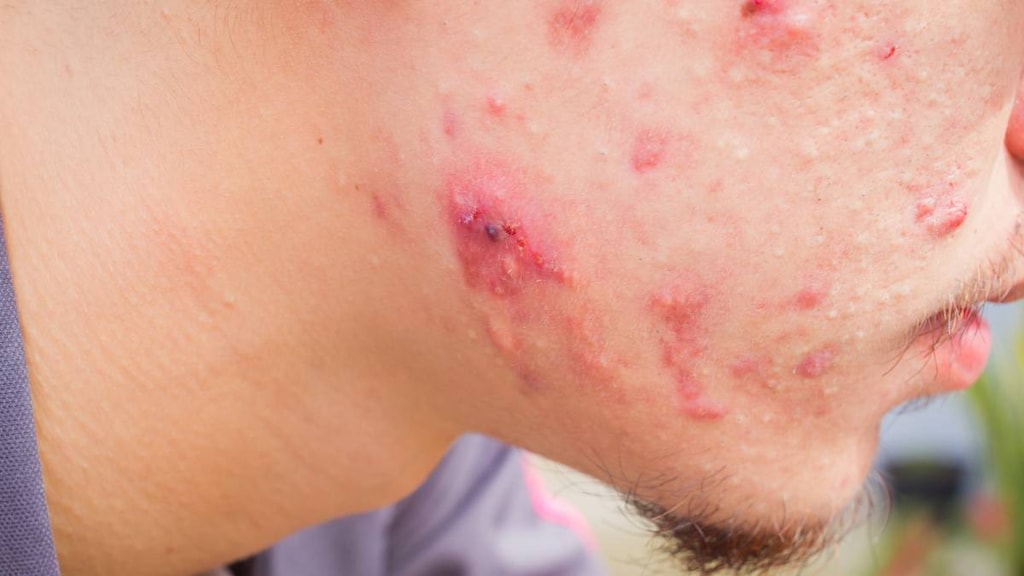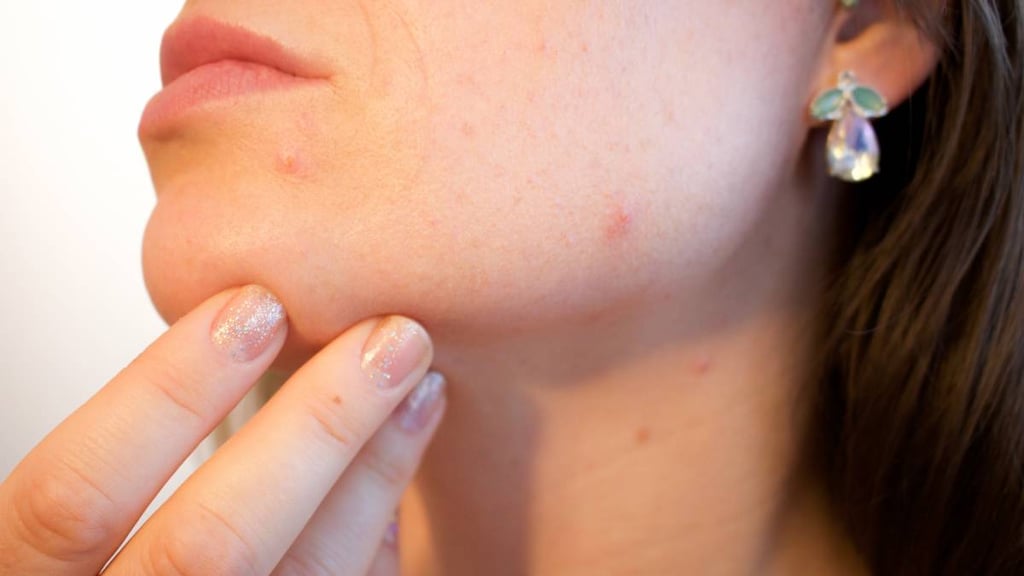Dosage Forms
Excipient information presented when available (limited, particularly for generics); consult specific product labeling.
Cream, External:
Azelex: 20% (30 g, 50 g)
Azelex: 20% (30 g, 50 g) [contains benzoic acid, cetearyl alcohol, propylene glycol]
Foam, External:
Finacea: 15% (50 g) [contains benzoic acid, cetostearyl alcohol, polysorbate 80, propylene glycol]
Gel, External:
Finacea: 15% (50 g) [contains benzoic acid, disodium edta, polysorbate 80, propylene glycol]
Generic: 15% (50 g)
Pharmacology
Mechanism of Action
Azelaic acid is a dietary constituent normally found in whole grain cereals; can be formed endogenously. Exact mechanism is not known. In vitro, azelaic acid possesses antimicrobial activity against Cutibacterium acnes and Staphylococcus epidermidis. May decrease microcomedo formation.
Pharmacokinetics/Pharmacodynamics
Absorption
Cream: ~3% to 5% penetrates stratum corneum; up to 10% found in epidermis and dermis; 4% systemic
Metabolism
Negligible after topical application; some beta-oxidation to shorter chain dicarboxylic acids
Excretion
Urine (primarily as unchanged drug)
Onset of Action
Cream: Within 4 weeks
Half-Life Elimination
Topical: Healthy subjects: 12 hours
Use: Labeled Indications
Acne vulgaris (cream): Treatment of mild to moderate inflammatory acne vulgaris.
Guideline recommendations: The American Association of Dermatology (AAD) acne guidelines support azelaic acid use as an adjunctive treatment option and, in particular, recommend its use in the treatment of postinflammatory dyspigmentation (AAD [Zaenglein 2016]).
Rosacea (foam, gel): Treatment of inflammatory papules and pustules of mild to moderate rosacea.
Limitations of use: Efficacy for treatment of erythema in rosacea in the absence of papules and pustules has not been evaluated.
Contraindications
Cream: Hypersensitivity to azelaic acid or any component of the formulation.
Foam: There are no contraindications listed in the manufacturer's labeling.
Gel: There are no contraindications listed in the US manufacturer's labeling.
Canadian labeling: Hypersensitivity to azelaic acid or any component of the formulation.
Dosage and Administration
Dosing: Adult
Acne vulgaris: Topical: Cream 20%: Apply a thin film to the affected area(s) twice daily, in the morning and evening; may reduce to once daily if persistent skin irritation occurs. Improvement in condition is usually seen within 4 weeks.
Rosacea: Topical: Gel 15% and foam 15%: Apply a thin layer to the affected area(s) of the face twice daily, in the morning and evening; reassess if no improvement after 12 weeks of therapy.
Dosing: Geriatric
Refer to adult dosing.
Dosing: Pediatric
Acne vulgaris: Children ≥12 years and Adolescents: Cream (Azelex 20%): Topical: Apply a thin film to affected area(s) twice daily, in the morning and evening; may reduce to once daily if persistent skin irritation occurs
Administration
Apply a thin film and gently massage into to clean, dry skin; wash hands following application. Avoid the use of occlusive dressings or wrappings. For foam and gel formulations, cosmetics may be applied after the foam or gel has dried. Use only mild soaps or soapless cleansing lotion for facial cleansing. Not intended for intravaginal, ophthalmic, or oral use.
Foam: Shake well before use.
Dietary Considerations
Gel: Foods and beverages that might provoke erythema, flushing, and blushing, such as spicy food, alcoholic beverages, and thermally hot drinks (including hot coffee and tea), should be avoided.
Storage
Store at 15°C to 30°C (59°F to 86°F); do not freeze. Store cream on its side. Discard the gel pump 8 weeks after opening.
Foam: Store at 25°C (77°F); excursions are permitted between 15°C and 30°C (59°F and 86°F). Flammable; avoid fire, flame, or smoking during and immediately following application. Contents under pressure. Do not puncture or incinerate. Do not expose to heat or store at temperatures above 49°C (120°F). Discard 8 weeks after opening.
Drug Interactions
There are no known significant interactions.
Adverse Reactions
>10%: Dermatologic: Burning sensation of skin (≤16%), stinging of skin (≤16%), tingling of skin (≤16%)
1% to 10%:
Dermatologic: Pruritus (1% to 6%), erythema (≤2%), skin irritation (≤2%), acne (gel: ≤1%), contact dermatitis (≤1%), desquamation (≤1%), xeroderma (≤1%), xerosis (≤1%)
Local: Application site pain (6%), application site pruritus (3%)
<1%, postmarketing, and/or case reports: Angioedema, application site erythema, dermatitis, dyspnea, edema, exacerbation of asthma, exacerbation of herpes labialis, facial edema, hypersensitivity reaction, hypertrichosis, hypopigmentation, iridocyclitis, local dryness, skin depigmentation (small spots), skin rash, swelling of eye, urticaria, vitiligo, wheezing
Warnings/Precautions
Concerns related to adverse effects:
- Hypersensitivity: Hypersensitivity reactions (eg, angioedema, dyspnea, eye swelling, facial swelling, skin reactions, urticaria) have been reported; discontinue use if signs/symptoms occur.
- Hypopigmentation: A few cases of hypopigmentation after use have been reported; monitor for changes in skin color, especially in patients with dark complexions.
- Skin irritation: Skin irritation (eg, pruritus, burning, stinging) may occur, usually during the first few weeks of therapy. Discontinue use if severe skin irritation or sensitivity occurs.
Disease-related concerns:
- Asthma: Exacerbation of asthma has been reported.
Dosage form specific issues:
- Foam: Contains flammable propellants. Avoid fire, flame and smoking during and immediately following use.
- Gel: Reassess use if no improvement is seen after 12 weeks of therapy.
- Polysorbate 80: Some dosage forms may contain polysorbate 80 (also known as Tweens). Hypersensitivity reactions, usually a delayed reaction, have been reported following exposure to pharmaceutical products containing polysorbate 80 in certain individuals (Isaksson 2002; Lucente 2000; Shelley 1995). Thrombocytopenia, ascites, pulmonary deterioration, and renal and hepatic failure have been reported in premature neonates after receiving parenteral products containing polysorbate 80 (Alade 1986; CDC 1984). See manufacturer’s labeling.
Other warnings/precautions:
- Appropriate use: For external use only; not for oral, ophthalmic, or vaginal use; avoid contact with the eyes, mouth, and other mucous membranes. Use of occlusive dressings or wrappings should be avoided.
Pregnancy
Pregnancy Risk Factor
B
Pregnancy Considerations
Adverse events have been observed in animal reproduction studies following oral administration. The amount of azelaic acid available systemically following topical administration is minimal (<4%).
Patient Education
What is this drug used for?
- It is used to treat pimples (acne).
- It is used to treat rosacea.
Frequently reported side effects of this drug
- Itching
- Burning
- Stinging
Other side effects of this drug: Talk with your doctor right away if you have any of these signs of:
- Shortness of breath
- Severe skin irritation
- Skin discoloration
- Signs of a significant reaction like wheezing; chest tightness; fever; itching; bad cough; blue skin color; seizures; or swelling of face, lips, tongue, or throat.
Note: This is not a comprehensive list of all side effects. Talk to your doctor if you have questions.
Consumer Information Use and Disclaimer: This information should not be used to decide whether or not to take this medicine or any other medicine. Only the healthcare provider has the knowledge and training to decide which medicines are right for a specific patient. This information does not endorse any medicine as safe, effective, or approved for treating any patient or health condition. This is only a brief summary of general information about this medicine. It does NOT include all information about the possible uses, directions, warnings, precautions, interactions, adverse effects, or risks that may apply to this medicine. This information is not specific medical advice and does not replace information you receive from the healthcare provider. You must talk with the healthcare provider for complete information about the risks and benefits of using this medicine.




